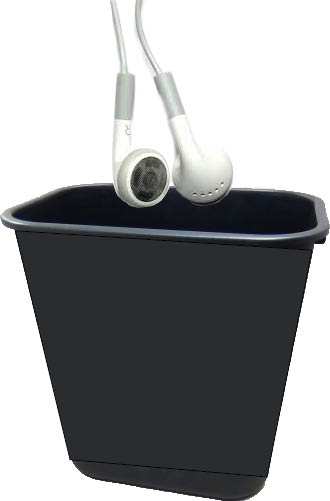For Better Sound Choose Good Headphones

Throw away your earbuds!
The single most important thing you can do to improve the quality of your digital sound is to buy a pair of good headphones. The variety of headphones to choose from in every price range is daunting to a first time buyer. Where do you start?
The first thing to decide is whether you want an open or closed architecture. In order to make that choice you should think about when and where you are most likely to use your headphones.
The closed architecture is good for headphones that you might wear while out—at the gym, on a train or at the airport. There is little to no sound leak, so people near you cannot hear what you are listening to unless the volume is very high.
If closed architecture suits your purpose, then decide whether you want noise cancellation or not. Noise cancellation headphones are not capable of producing the high quality sound that other headphones can produce. However, I use my Bose QC-3 noise cancellation headphones because even when I am not listening to anything I keep them turned on to dull down the hustle and bustle around me. It just seems to make travel less stressful, without completely blocking out important travel announcements.
Since this series of articles is about improving the quality of digital music, noise cancellation headphones are not an option. In fact, while there are good closed architecture headphones like the Beyerdynamic T70 or the Fostex TH-600, most audiophiles seem to prefer the open architecture.
After some reading and some listening at the New York Audio Show earlier this year, I narrowed down the choices of open architecture headphones to the following four: the AUDEZE LCD-2 at $1,000; the HiFiMan HE500 at $700; the Sennheiser HD 650 at $500, and the AKG-Q 701 at $250.
I ruled out the higher end headphones like the Grado PS1000 at $1600; Sennheiser HD800 at $1600 or the HiFiMan HE6 at $1300 for two reasons. First, they can’t be played without the right amplifier. Second, the jump in sound quality from an HE-500 to an HE-600 or from the Sennheiser HD 650 to the HD 800 is not significant enough to warrant the 100% price increase. Putting this money elsewhere in the headphone setup seems to offer a greater improvement in sound quality than investing in headphones in the just-under $2000 category.
The AKG-Q 701 is an amazing headphone for its price and so is the Sennheiser HD 650. However, both of these headphones were easily rejected in comparison to the Audeze LCD-2. The AKG-Q 701 didn’t seem to have the depth or richness of the others I tested, although they certainly sound much better than my Bose QC-3. The Sennheiser HD 650 seemed to have a tin or metallic cast. The symbols and snare drum in particular just didn’t sound accurate to me.
In the end, the toughest choice to make was between the Audeze LCD-2 and the HiFiMan HE500. Both of these open architecture planar magnetic cams produce a nice warm and accurate sound with good detail. When I switched them back and forth in a blind test I could not tell the difference so I went with the lower priced HE500.
I must note that an audio show or noisy showroom is not a good place to try out headphones. There is also no way to know how long the test headphones have burned in and how much burn-in time is optimal for the make and model. It is very possible that the tin sound I heard from the Sennheiser HD 650 was the sound of new headphones with no burn-in.
Throughout the process of building my headphone micro system I learned that there is no “perfect” or “best” component. The goal is to pick components that produce an objectively obvious improvement in sound quality from their competitors. If the improvement is subjectively subtle and the price jump from the “second best” competitor is significant—near double or more– I chose the “second best.” I also learned that the sound of each component changes subtly or dramatically when it is paired with other components and that every component needs to burn in for at least 200 hours before you can be sure that you are giving it a fair hearing. Finally, power supply, cords and connecting cables should be considered “components” and require the same attention and scrutiny.
